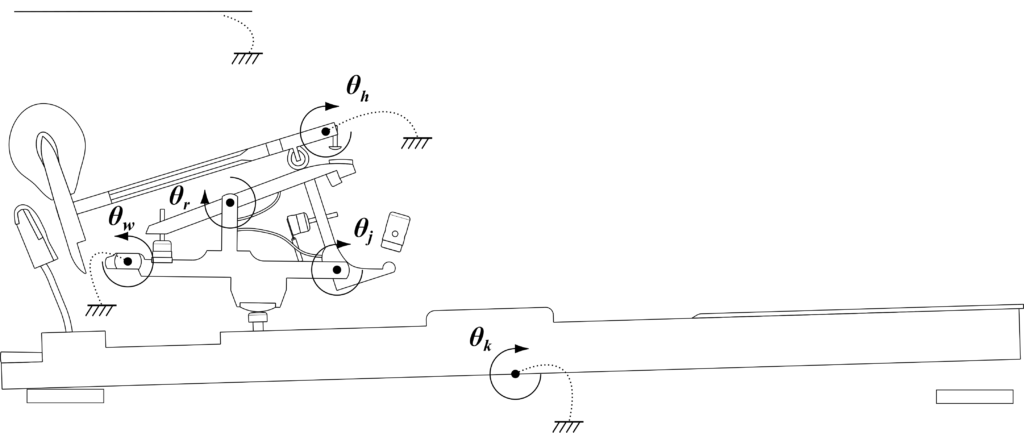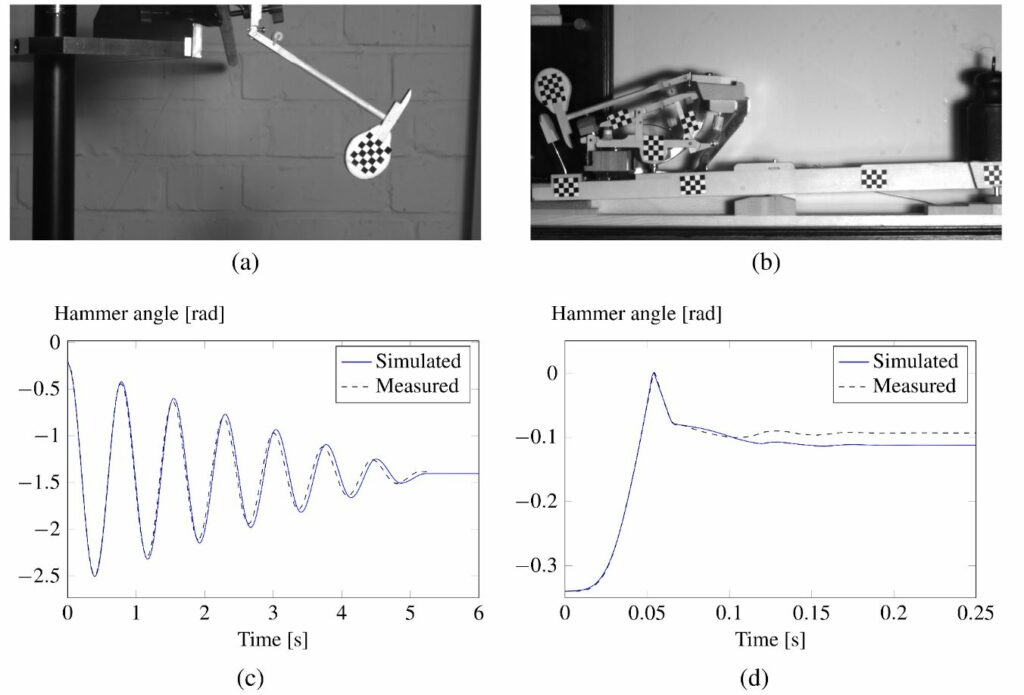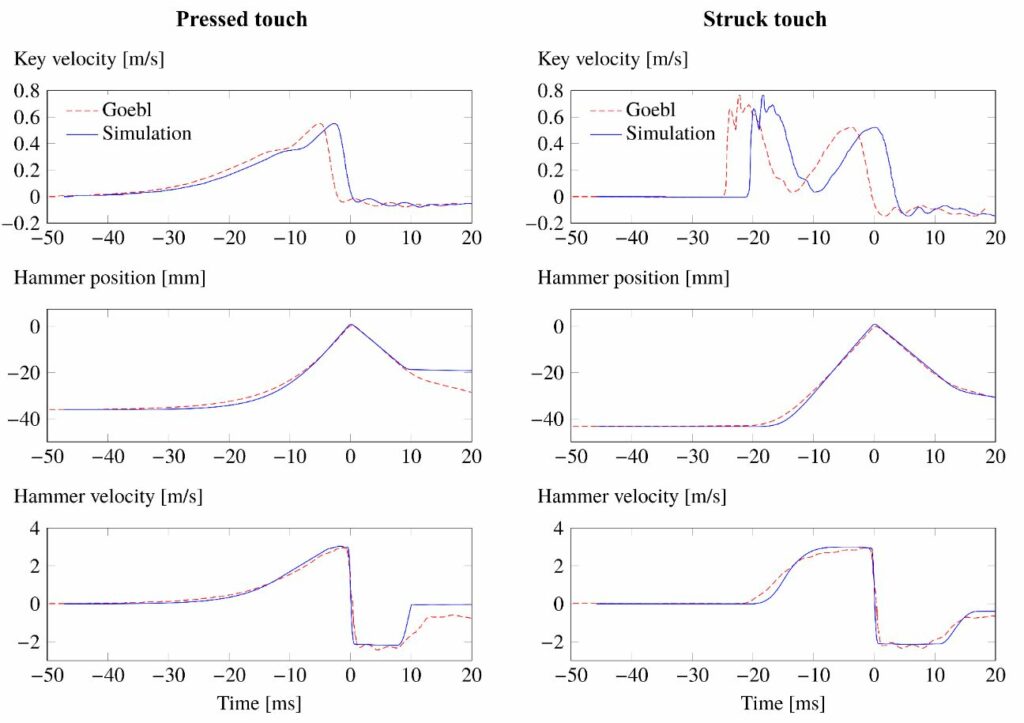
Abstract:
Double escapement piano action is a striking mechanism whose functioning is based on dynamic principles. In this case, the above-mentioned motion and behaviour are computed instead of being measured. Subsequently, the response of the mechanism to any key stroke can be computed and visualized. In this work, the functioning of the most modern double escapement action found in grand pianos is demystified thanks to the multibody modeling features. The goal, which is mostly pedagogical, is achieved with three progressive models; the first one is a simplified version of the action to which components of the complete action have been (virtually) removed. The stepwise progression leads to a single escapement action for the second model, and finally to the full double escapement action for the third.
Keywords: Piano action – Mechanics – contact model – Education
In the multibody model of a grand piano action (below), the rotational motions of the bodies are the generalized coordinates of the model. The body parameters (mass, centre of mass, inertia, etc.) have been experimentally identified by unmounting the components of the action.

Experimental validations of the models have been performed for different parts of the actions. The models are compared with reality using a high-speed camera (3000 fps).

The advantage of a model is that one can virtually remove parts of a mechanism. It allows to observe how it would behave with and without them. Thus, the following movies show a process in three progressive steps, each of them explaining incrementally the action functionning.
Let us illustrate the a keystroke on the double escapement piano action during which the finger starts on the key (below, left), the second starts at a certain distance from the key surface (below, right).

Predictably, the response of the two actions (real [3] and simulated) are somewhat different. This can be explained to a large extent by the fact that the two actions differ.
See also other experimental applications of Robotran : https://www.robotran.be/applications/labo-dyn/
Baudouin Bokiau, Sébastien Timmermans, Paul Fisette.